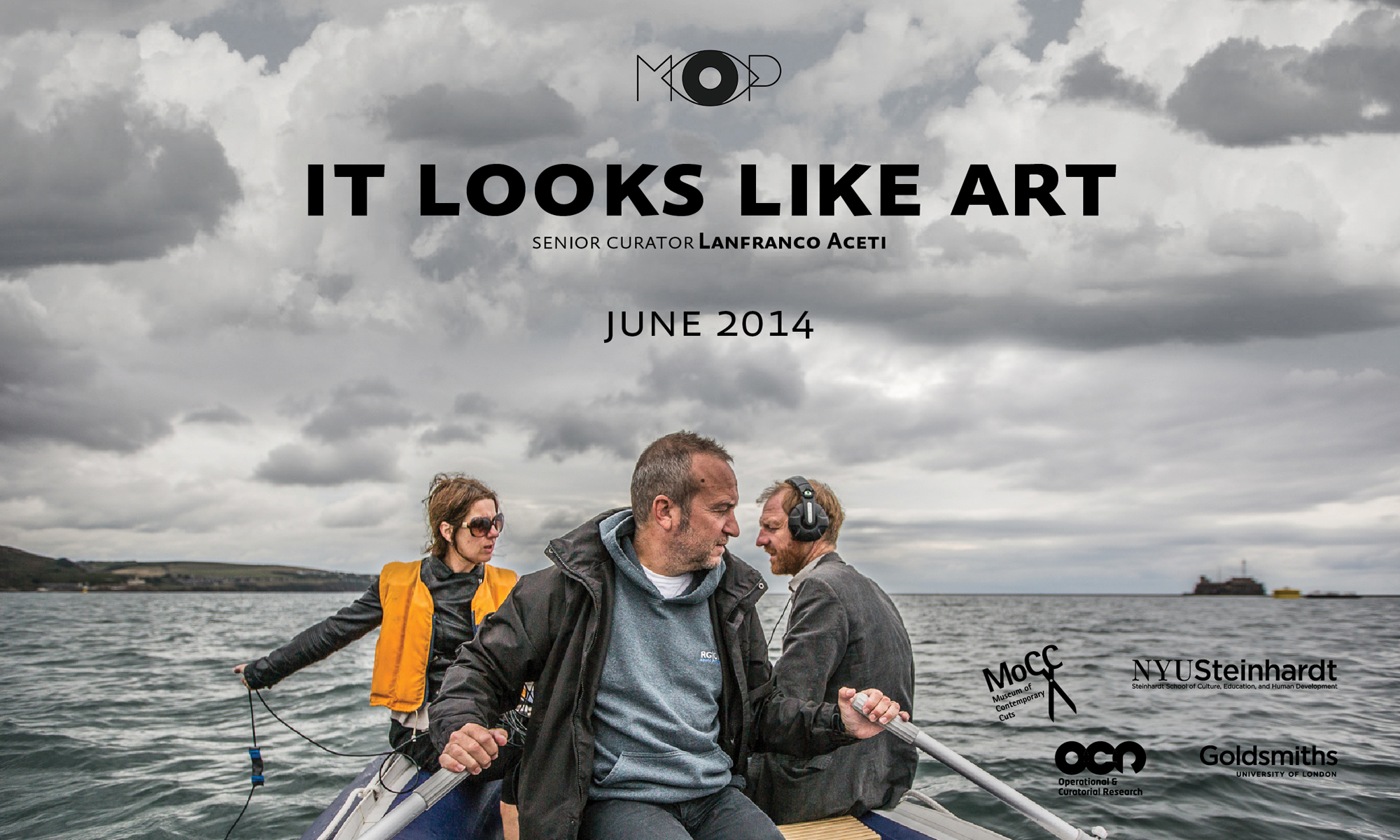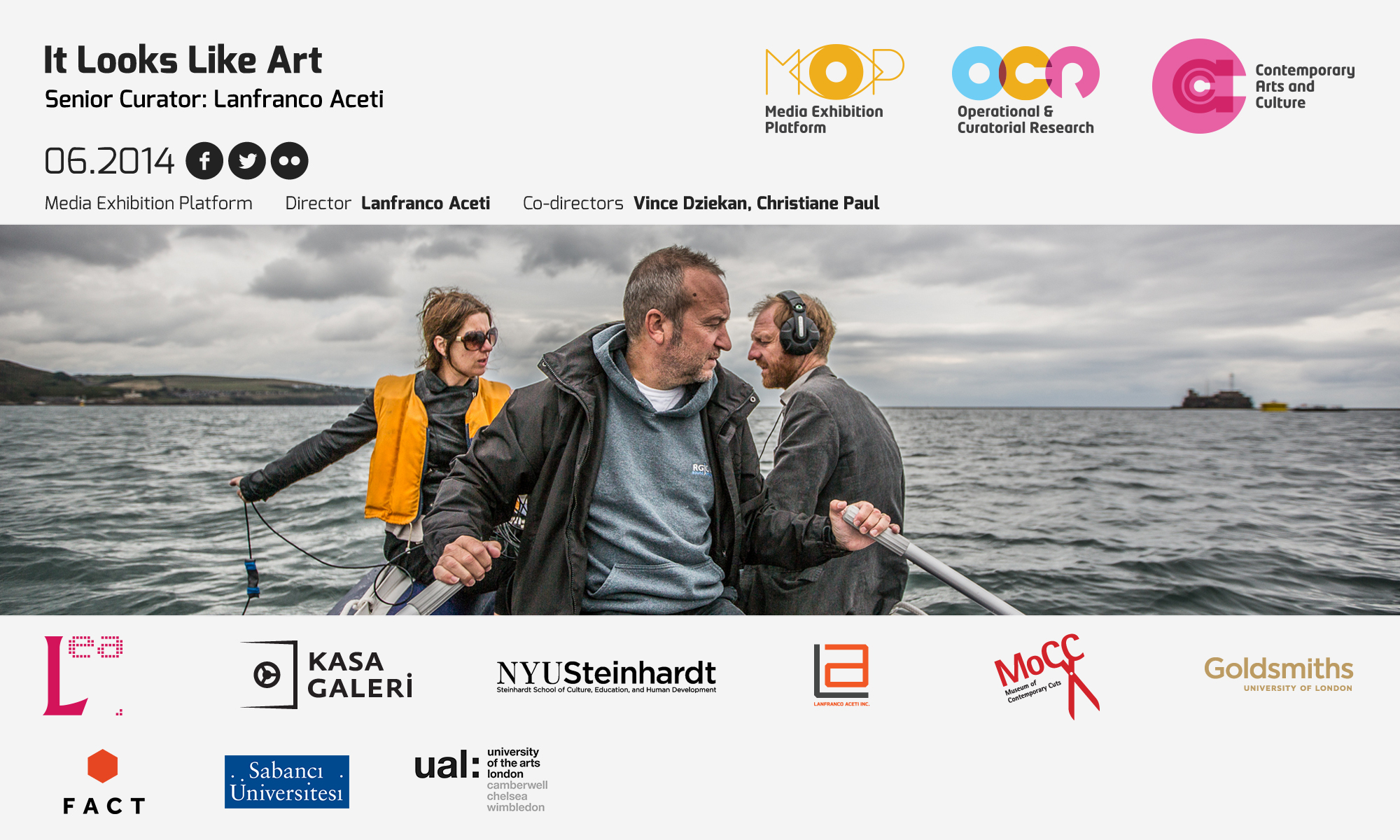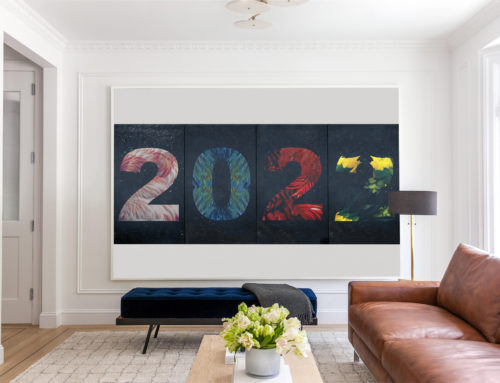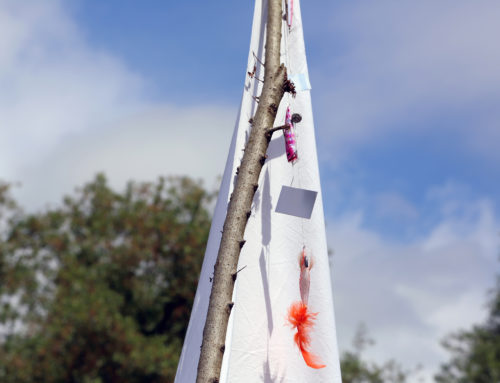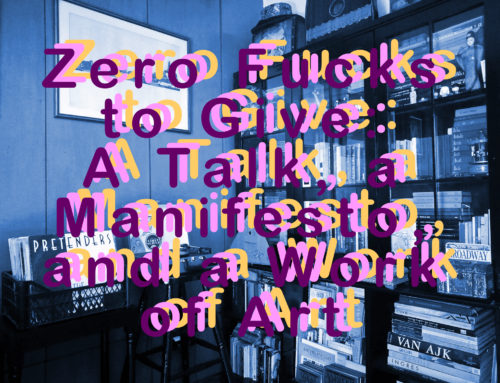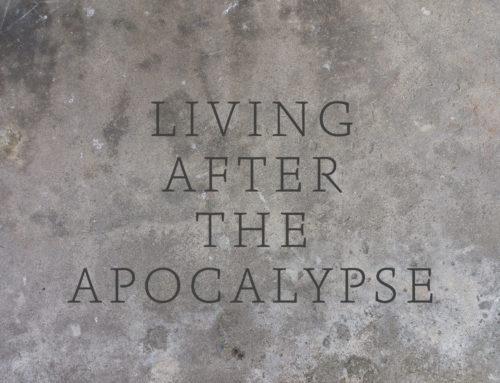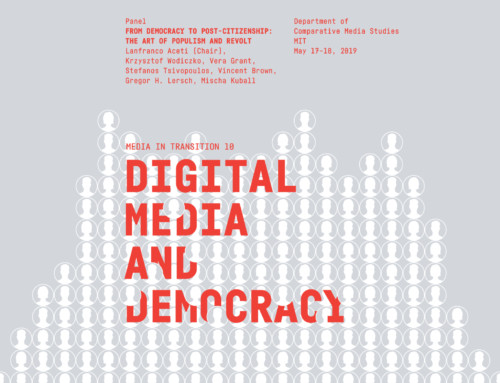It Looks Like Art is the new exhibition of OCR’s Media Exhibition Platform (MEP) that coincides with the Sound Art Curating Conference at Goldsmiths and the Courtauld. The exhibition is an international collaboration that sees the partnerships of MEP, NYU Steinhardt, Goldsmiths, Kasa Gallery and other international institutions. The exhibition is a counterpoint to the show at Kasa Gallery titled It Sounds Like Art. The exhibition looks at the complex relationship between sound art and visuals through a variety of artistic and aesthetic practices.
Is the relationship between sounds and visuals an inextricable one? What sensibilities and approaches are required in order to engage with sounds in an aesthetic context? Is there a conflict between sound and visuals that underpins hierarchical relationships or could we say that sound art has developed a new hierarchical order within which the visual plays an ancillary role, traditionally the ‘realm’ of sound?
As sound art practices evolve and develop, new constructs and artistic approaches emerge which bend – sometime harmoniously, sometimes conflictingly – old relationships and frameworks in order to construct new aesthetics and new fine art practices beyond old dichotomies and set operational structures.
Image Credit: FATHOM, Jane Grant and John Matthias, 2013. Jane Grant, Simon Honywill and John Matthias making hydrophone recordings in Plymouth Sound. Photograph by Guy Harris, 2013. Used with permission.
Senior Curator: Lanfranco Aceti.
Curator: Jonathan Munro.
Exhibition Dates: May 9 – June 7, 2014.
Where: Media Exhibition Platform (MEP)
You can follow developments for Lanfranco Aceti Inc., OCR and the Museum of Contemporary Cuts (MoCC) via the newsletter.
ARTISTS’ BIOGRAPHIES
John Levack Drever
Operating at the intersection of sound arts, soundscape studies and acoustics, Drever’s work represents an ongoing inquiry into the affect, perception, design and practice of everyday environmental sound and human utterance. Projects are often derived from extensive fieldwork. Drever is a Senior Lecturer in Composition at Goldsmiths, University of London, where he leads the Unit for Sound Practice Research. He is also a Visiting Research Fellow at Seian University of Art and Design, Japan.
Sublime-sound‐of‐the‐one‐hand
Jane Grant
Jane Grant is an artist and academic. Her collaborative work has resulted in award winning projects including, The Fragmented Orchestra with John Matthias and Nick Ryan which was winner of the PRSF New Music Award, 2008 and received an Honorary Mention at Prix Ars Electronica 2009. The Fragmented Orchestra was exhibited at FACT and 23 sites across the UK. Her recent work includes Soft Moon and Leaving Earth; both films draw upon astrophysics and science fiction. Her sonic artwork Ghost was premiered at ISEA Istanbul 2011. In this work the temporal, topological networks and pathways of the cortex are explored in conjunction brain hallucination or ‘sonic ghosts.’ Plasticity, a collaborative work with John Matthias, Kin and Nick Ryan was recently exhibited at the BFI as part of the onedotzero festival, Google Campus London and HWK, Institute for Advanced Study in Germany. Jane is currently working on Heliosphere, a large-scale project about the ionosphere as the interface between the Earth and the Sun, a multi-screen film, Other Worlds about the interaction of the atmosphere of the Earth and its influence in looking into space. Jane, alongside John Matthias was commissioned by the River Tamar Project to create Fathom a huge sonic art work that created a sonic surface 6ft above the floor. On entering the building, visitors were immersed in an underwater sound-environment where the minute fluctuations of the sea are heard as they moved around the space. These fluctuations were marked by waves of live and recorded sound moving across the building triggered by environmental events, the tides in confluence with the Tamar Estuary.
With John Matthias, Jane co-directs the NeuroArts, an international series of symposia that brings together artists, scientists and philosophers. NeuroArts is an interdisciplinary exploration and interrogation of the field, an exchange of ideas between artists, writers, experimenters and theoreticians.
Jane writes about noise, science and art and the mutability of matter. She is Associate Professor (Reader) in Digital Arts at Plymouth University, co-director of the research group art and sound and Principle Supervisor in the Planetary Collegium, CaiiA-Node.
Nigel Helyer
Dr. Nigel Helyer (a.k.a. DrSonique) is an independent sound-artist who has forged an international reputation for large scale sound-sculpture installations, environmental public artworks, museum inter-actives and new media projects. Nigel is a longstanding collaborator at the SymbioticA lab UWA, realising such projects as GeneMusiK a biological music remixing system, the insect installation Host and as the Artistic Director of the infamous LifeBoat project shown in Oslo Fjord 2004, on a Baltic cruise ship during ISEA 2004 and in Zagreb 2006. He has also worked as a sound-artist/researcher at the Paul Scherrer Institut, Switzerland with the Tropical Marine Research Labs at the National University of Singapore. Nigel has held visiting Professor positions at the School of the Art Institute of Chicago, Stanford University, La Esmeralda, Mexico City the department of Architectural Acoustics University of Sydney and the School of Computer Science and Engineering at UNSW.
He developed a powerful virtual audio reality mapping system, Sonic Landscapes with LakeTechnology (now Dolby Australia) and was the Artistic Director of the AudioNomad Research Group developing the AudioNomad location sensitive environmental audio system at the School of Computer Science and Engineering UNSW (funded under a ARC Synapse grant). Subsequent developments in acoustic cartography have been realised as a series of national and international exhibitions Syren, aboard the MV Opera in the Baltic Sea (ISEA2004), Syren for Port Jackson (MCA Sydney 2006), Run Silent Run Deep (National Museum of Singapore ISEA2008), Ecolocated (Belfast ISEA2009 + FACT in the AND Festival Liverpool 2009) and the GhosTrain Project (ABC + The Performance Space 2009/2010).
The EcoLocated project concerned the sonification of water quality data, a method which is currently being developed in a series of environmental audio-portraits; the recent VoxAura; the River is Singing commissioned for Turku, European Capital of Culture 2011; the Deluge current project located in the Black Sea; Upstream/DownStream an ARC funded project at the BundanonTrust 2013/17 and as part of the current Under the Icecap collaboration with Dr Mary-Anne Lea of the University of Tasmania and the Institute of Marine and Antarctic Studies investigating the sonic potentials of bio-logging data in the Southern Oceans.
John Matthias
John Matthias is a musician, composer and physicist. In 2008, he won the UK PRS Foundation New Music Award (The ‘Turner Prize’ for music) with Jane Grant and Nick Ryan for the development of a huge sonic installation entitled The Fragmented Orchestra which won an honorary mention at the Prix Ars Electronica 2009. He has released four albums; ‘Smalltown, Shining’ (2001), ‘Stories from the Watercooler’ (2008), ‘Cortical Songs’ (2009) (with Nick Ryan), which includes remixes by Thom Yorke, Simon Tong and Jem Finer and ‘Geisterfahrer’ (2014). ‘Cortical Songs’ was voted one of the top ten classical albums of 2009 by Time Out (Chicago). John has also won awards at the Cannes Film Festival and the Prix Italia. He has collaborated with many recording artists including Radiohead and Coldcut and has performed extensively internationally including at the Ecstatic Music Festival in New York, The Pompidou Centre in Paris and at the Royal Opera House in London. He has recently been involved in collaborations with the Rambert Dance company in London and artist, Stanley Donwood in San Francisco. He is Associate Professor in Sonic Arts at Plymouth University, has a Ph.d in Physics from Exeter University and is Co-Director of the Art and Sound Research Group at Plymouth University.

